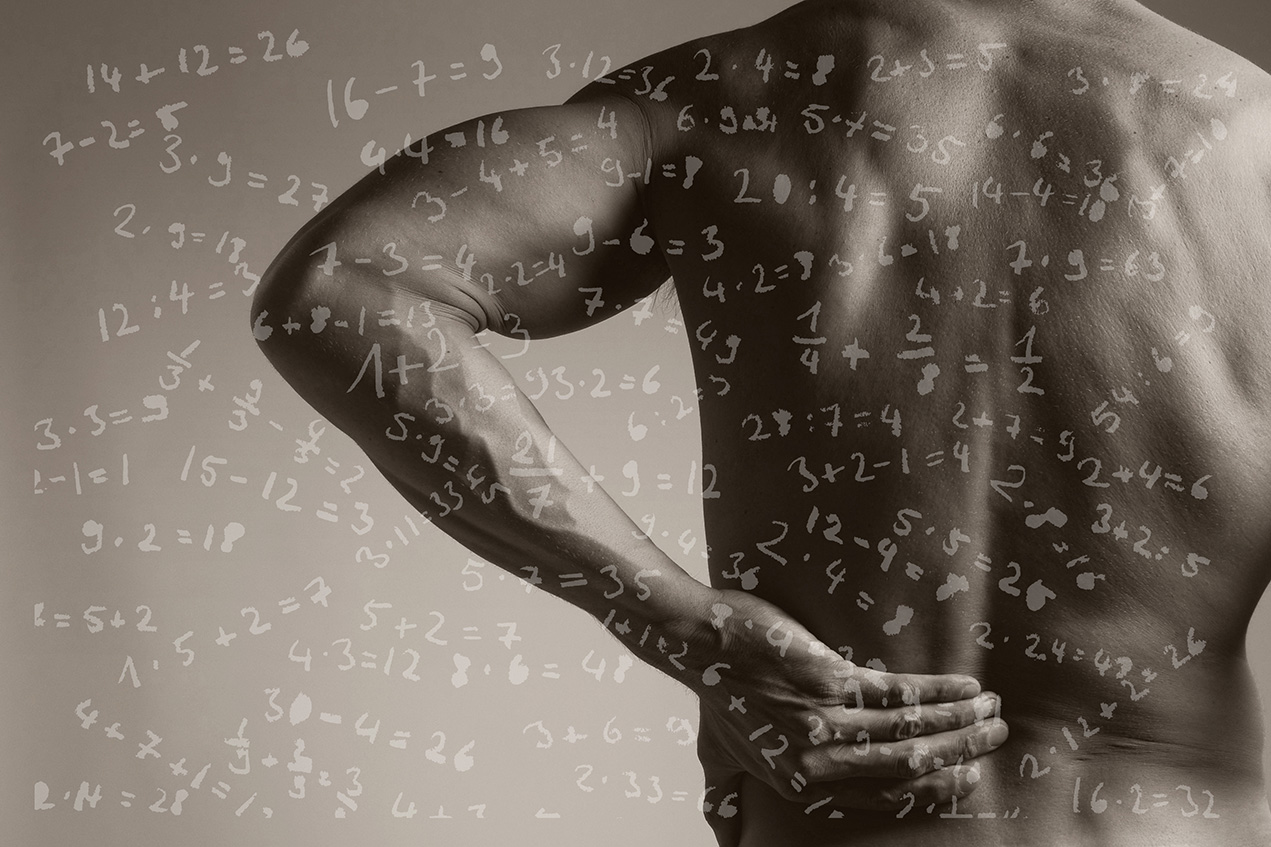Researchers are figuring out how to get people with back pain to move more like people without it by using the diversion of mental math.
K. Michael Rowley, PhD, is in the business of beating back pain with the brain. Rowley, an adjunct assistant professor of physical therapy, teaches in the hybrid online/on-campus DPT program and studies motor control and cognitive ergonomics — how people arrange their attentional resources.
In a new study published in the journal Experimental Brain Research, Rowley and his colleagues wanted to see what happened to someone’s torso during a balance task where they had to control an unstable spring with one leg. As Rowley explained, people who have back pain on and off tend to have more dissociated motion between the upper trunk and the pelvis compared to those without a history of low back pain, who move their trunk in a more coordinated fashion.
When the researchers asked all the participants to do mental math problems while they balanced, they noticed that those with a history of low back pain changed their movements and started to look more like the control group without a history of pain. The improvement in the back-pain group shows how cognition influences movement, Rowley said, “because we found that if we’ve distracted the cognition — making them think about something else — all of a sudden that pattern sort of looks more like the back-healthy participants.”
Some clinicians and physical therapists are already starting to implement similar techniques into their work, but the research provides more evidence for the use of some cognitive dual tasking during rehabilitation, Rowley said.
One example is that if a patient has to do an exercise 10 times, asking that patient to count backwards from 10 instead of forwards, or count by threes instead of count by ones, could be enough of a cognitive distraction to help them.
Part of the reason these distracting tools may work is that people who are in pain already think about their bodies more — worrying that something may cause more pain the future.
“They may be doing too much,” Rowley explained, so distracting them takes them back to a normal state. He wouldn’t recommend the technique with dynamic tasks or large range of motions; that could lead to a higher risk of injury. But in this small range-of-motion, upright-balance task, it may be appropriate.
There are still future questions to be answered. For example, what happens when patients do these tasks while they are still in pain, not in remission as this study examined?
“A lot of times people have back pain, they go to some PT appointments and the pain goes away. Then they go home and stop their rehabilitation, and a few weeks later they’re going to have pain again,” Rowley said. “We would like to change the model of treatment, where people are going in for relapse prevention visits, maybe once a month to evaluate your movement even when you’re not in pain.”
Rowley added that his research is aided by collaboration with other colleagues in the division: Professor Clinical Scholar–Physical Therapy Kornelia Kulig, PhD, Carolee Winstein, MS, Aimee Diaz, DPT, Professor Clinical Scholar–Physical Therapy Lori Michener, PhD, and Jonathan Sum, DPT.
— Katharine Gammon
This research was supported by the American Society of Biomechanics Graduate Student Grant-In-Aid and the International Society of Biomechanics Matching Dissertation Grant.


